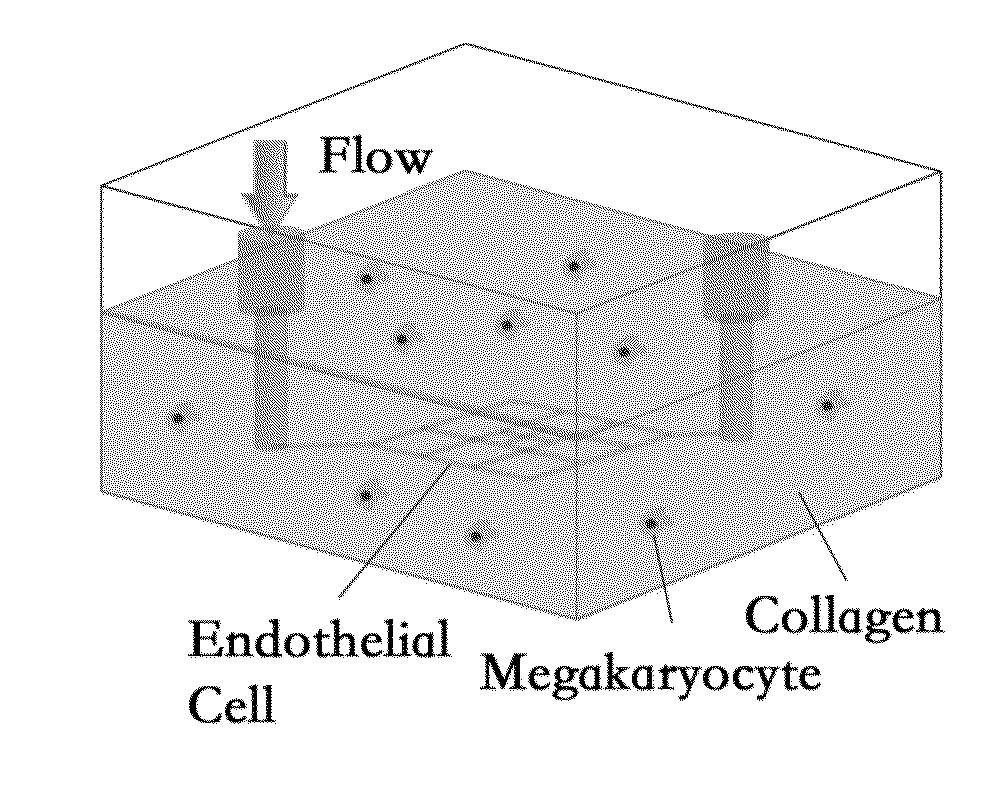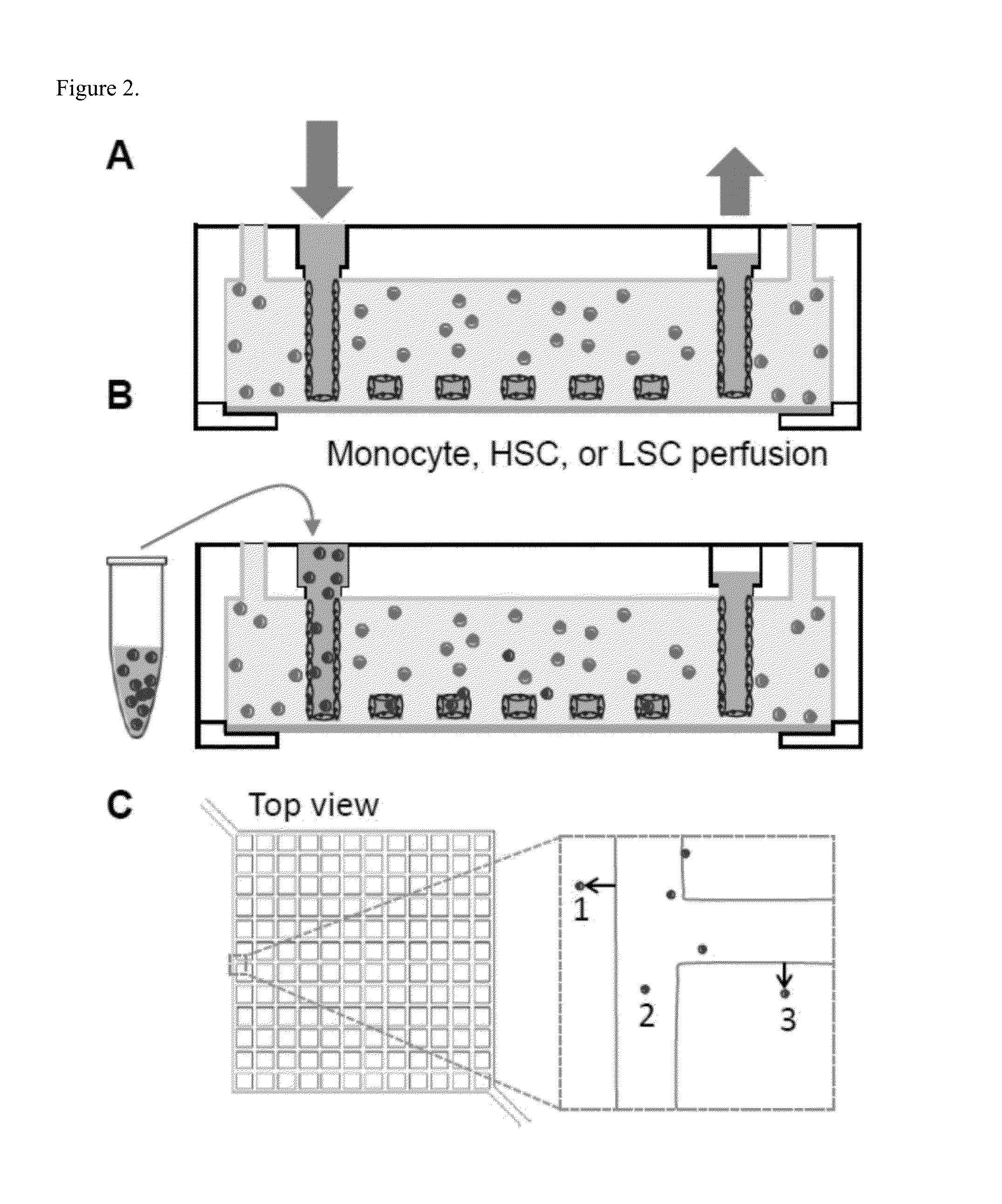Blood-cell producing bio-microreactor
a bio-microreactor and blood cell technology, applied in the field of blood cell production bio-microreactors, can solve the problems of unmet need for stem cell production, limited tools available, and limited study of individual cellular components in different combinations of animal models
- Summary
- Abstract
- Description
- Claims
- Application Information
AI Technical Summary
Benefits of technology
Problems solved by technology
Method used
Image
Examples
example 1
[0026]In the present disclosure, we reconstituted a microvascular niche for thrombopoiesis using a system of perfusable microvessels formed within a collagen matrix into which megakaryocytes (from multiple sources: human peripheral blood or cord blood CD34+ cells, canine bone marrow, and mouse fetal liver) were randomly dispersed (FIG. 1A). The megakaryocytes did the following: a) migrated toward the blood vessel and concentrated on its abluminal side (FIG. 1B); b) increased vessel permeability by inducing the formation of fenestrations in a previously continuous endothelium; c) crawled through the fenestrations or through cell-cell junctions into the vessel lumen, either as proplatelet processes (FIG. 1C) or intact cells; and d) shed platelet-like particles (PLPs) of between 2.5 μm and 3.5 μm diameter into the vessel lumen. Both migration and fenestration were blocked with an antibody against CXCR4, the receptor for the chemokine SDF-1. Of the cells or cell fragments that reached t...
example 2
[0030]In the bone marrow, the stromal fraction plays a critical role in defining the vascular state with regards to stem cell homing, engraftment, and mobilization. In disease contexts, such as leukemia, the marrow microenvironment (ME) is fundamentally changed, and leukemic cells have muddled interactions with the stroma and vasculature. In this study, we developed a 3D microfluidic vessel system to reconstruct the bone marrow ME and to examine the role of specific stromal components in defining endothelial phenotype and hematopoietic cell homing behaviors. To better approximate the marrow ME, two stromal cell lines, HS27a, which expresses stem cell niche-associated proteins, and HS5, which secretes copious amounts of growth factors, are embedded in the matrix. We see that both stromal environments reduce endothelial expression of vWF and junctional proteins while HS5-modified vessels have increased inflammatory cytokines. To assess functional effects of these changes, monocytes, H...
PUM
| Property | Measurement | Unit |
|---|---|---|
| contractile forces | aaaaa | aaaaa |
| contractile forces | aaaaa | aaaaa |
| diameter | aaaaa | aaaaa |
Abstract
Description
Claims
Application Information
 Login to View More
Login to View More - R&D
- Intellectual Property
- Life Sciences
- Materials
- Tech Scout
- Unparalleled Data Quality
- Higher Quality Content
- 60% Fewer Hallucinations
Browse by: Latest US Patents, China's latest patents, Technical Efficacy Thesaurus, Application Domain, Technology Topic, Popular Technical Reports.
© 2025 PatSnap. All rights reserved.Legal|Privacy policy|Modern Slavery Act Transparency Statement|Sitemap|About US| Contact US: help@patsnap.com



